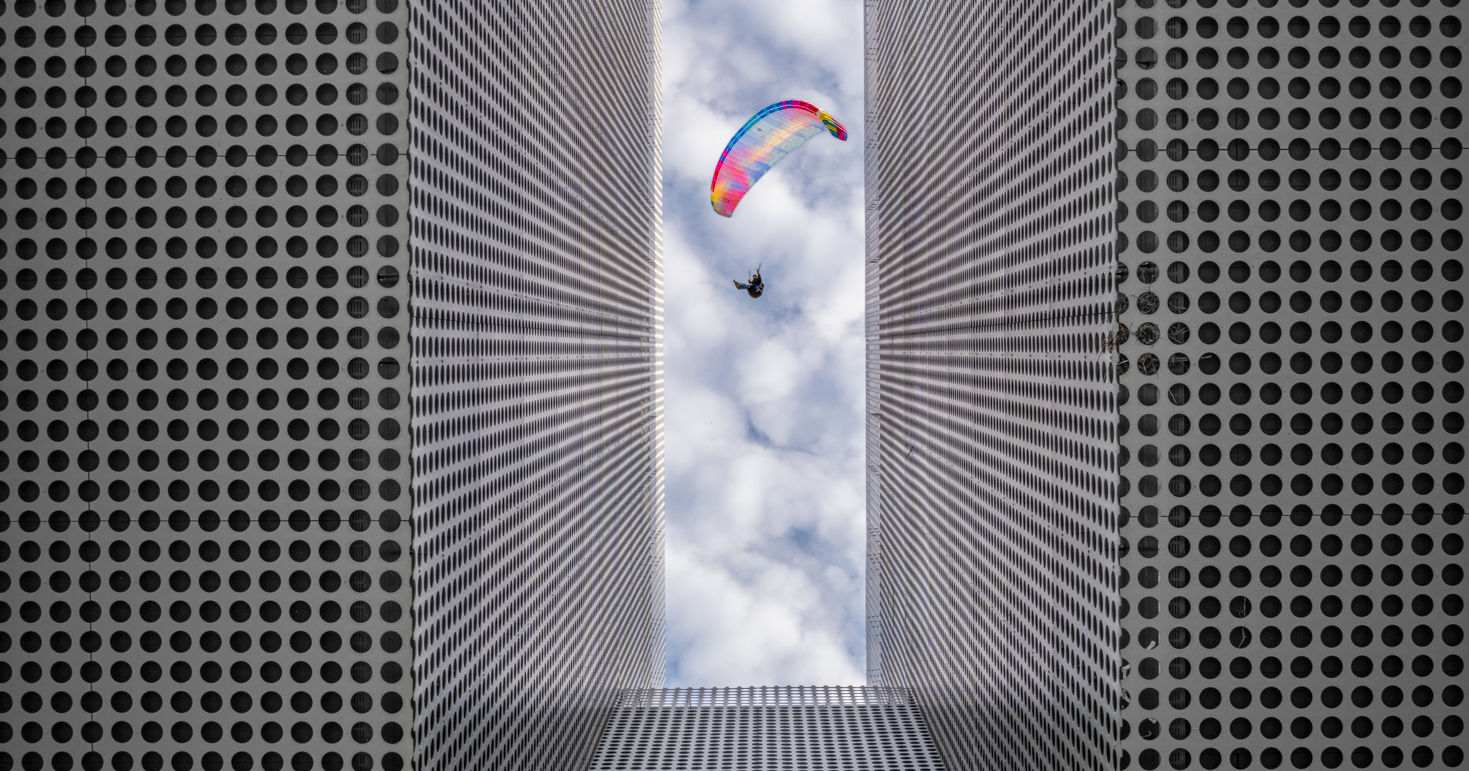Call for entries: The 14th Architizer A+Awards celebrates architecture's new era of craft. Apply for publication online and in print by submitting your projects before the Main Entry Deadline on December 12th!
This year’s 2022 One Photo Challenge has come to an exciting close and has concluded with some incredible winners and finalists showcasing the boundless possibilities of architectural photography. This year’s winning photograph in the non-student category is “A Glimpse of Heaven” by Jean-Claude Ardila.
Ardila’s photograph captures a paraglider framed by the Tampa Museum of Fine Art edifice. The image reveals a distorted and almost disorienting perspective, where one is unsure if they are looking above or straight on. Such a shot came to fruition through study, imagination and much patience. The museum’s striking façade and bold form lead the gaze to the paraglider, whose presence is light and transient. The exterior’s perforated façade is strong in appearance yet monochrome in tone. This contrasts with the background, where the cloud-filled sky and paraglider provide a richer color palette and feeling of airiness.
Ardila’s photographic passion lies in capturing the moment where architecture, landscape and living entities harmonize. We spoke with Jean-Claude to learn more about his winning photograph and everything that led to the final composition.
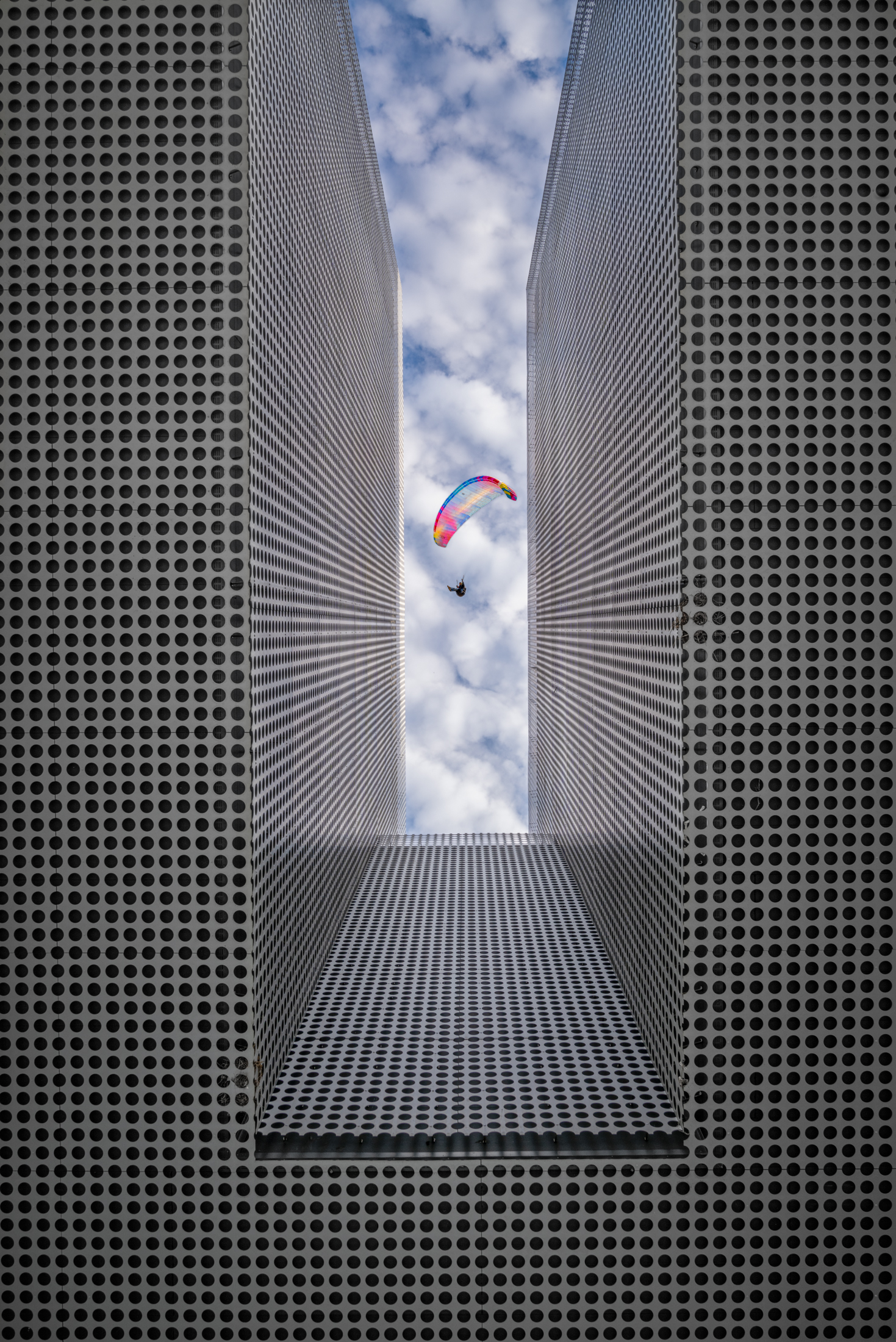
Jean-Claude Ardila’s winning entry, “A Glimpse of Heaven.” Camera used: Sony a7R IV & 16-35mm f/2.8 G master lens.
Francesca Mercurio: Congratulations Jean-Claude on winning the One Photo Challenge!
Jean-Claude Ardila: Thank you so much! This is really an honor for me and I want to dedicate this prize to my father.
What first got you into photography and what does this medium mean to you?
My father introduced me to the world of photography. He was an educator at Los Andes University in Merida, Venezuela. He took aerial images to draw the topography of the land below in order to create roadmaps in the photogrammetry lab. Landscape photography became my passion when in the darkroom, images appeared magically on a piece of paper right in front of my eyes. The desire to appreciate and study the works of artists such as Peter Lik, Ansel Adams, Henri Cartier-Bresson and Marc Riboud influenced my artistic development. These amazing creators have given me a sense of respect and gratitude for the world in which we live. I developed a sense of admiration for the most fragile detail, colors, light and textures. I capture the relationship between the landscape and all the living things in perfect harmony.
What sparked your interest in entering the competition, and what does winning mean to you?
I became really interested in entering the competition after participating in Architizer’s LiveTalk with Ema Peter (“The Art of Architectural Photography”). I was blown away by the beauty of the images I saw in the presentation. Winning the competition means motivation, reassurance and an injection of creativity to continue enjoying this beautiful art of photography. It also means continuing to learn and challenging myself to be better; to go out there and continue finding that decisive moment where landscape and architecture coexist in perfect symmetry with the human element.
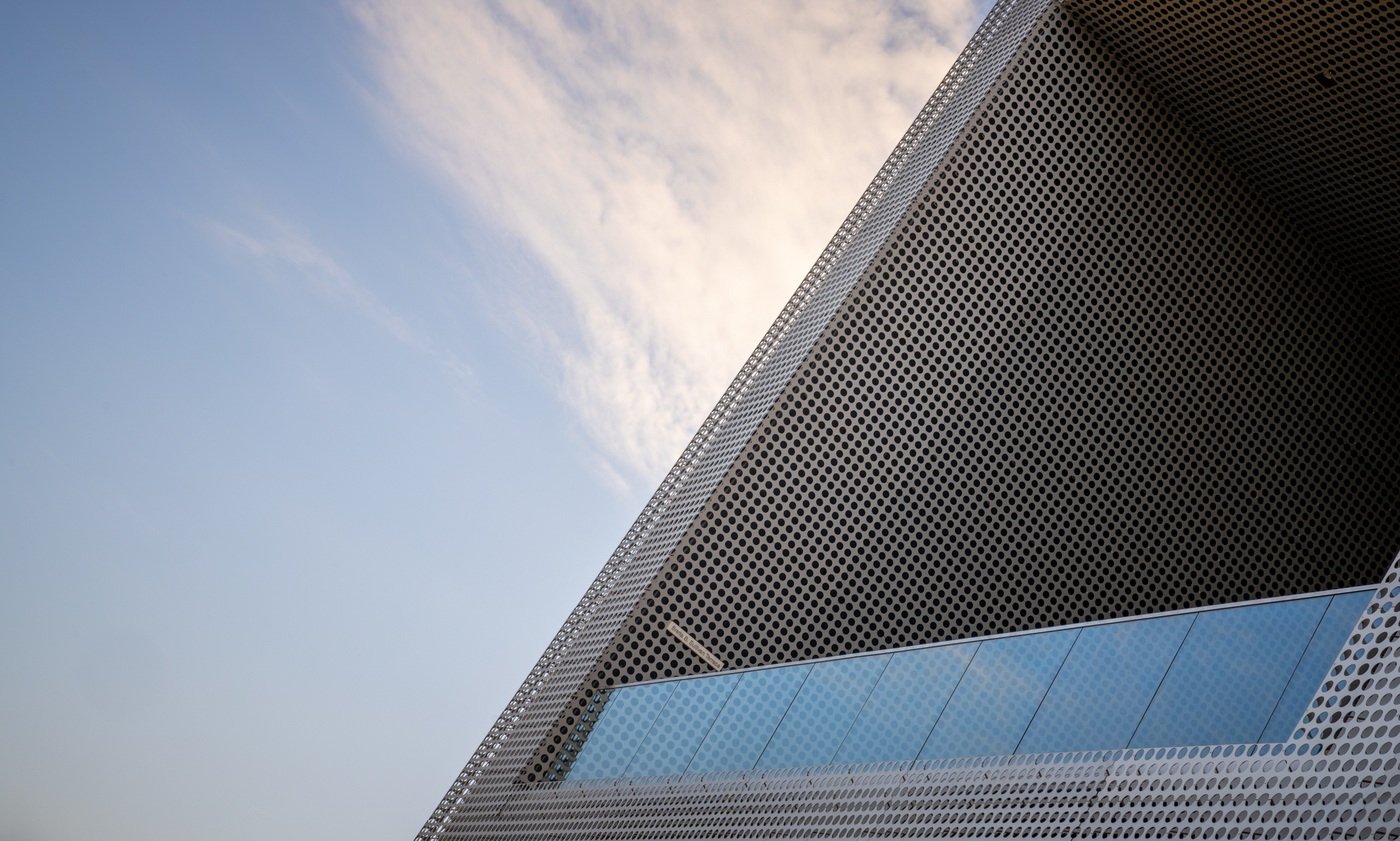
Photograph of the Tampa Museum of Art by Stanley Saitowitz / Natoma Architects, by Jean-Claude Ardila
Which camera did you shoot with and can you speak to that choice?
I used a Sony a7R IV together with my 16-35mm f/2.8 G master lens. I consider this camera my primary camera when I am going to photograph important projects or large structures where I need as much detail as possible. This camera is capable of producing beautiful 61MP files.
What drew you to your subject matter that ultimately culminated in the winning photo? And/or what significance does this image have to you personally and your experience as a photographer?
I have been to the Tampa Museum of Art a couple of times and always thought the architecture was very unique and interesting. However, I couldn’t seem to find the perspective I was looking for. For a while, I studied the building trying to find the most interesting angle while considering the sun’s location at different times of the day, cloud formation, etc. The simplicity of the end result occurred out of a simple fact — and perhaps funny.
It was really warm outside that day and I felt like laying down in the shade for a few minutes. That’s when I realized the angle underneath the building opening was providing a different perspective I didn’t try before…very close to the ground looking up to the sky. I adjusted myself a few times until I was dead center underneath with my wide angle lens taking different shots to make sure everything was in focus. The significance of this image reinforces in me the basic knowledge of studying your subject, planning the time and tools to shoot and trying all perspectives possible.
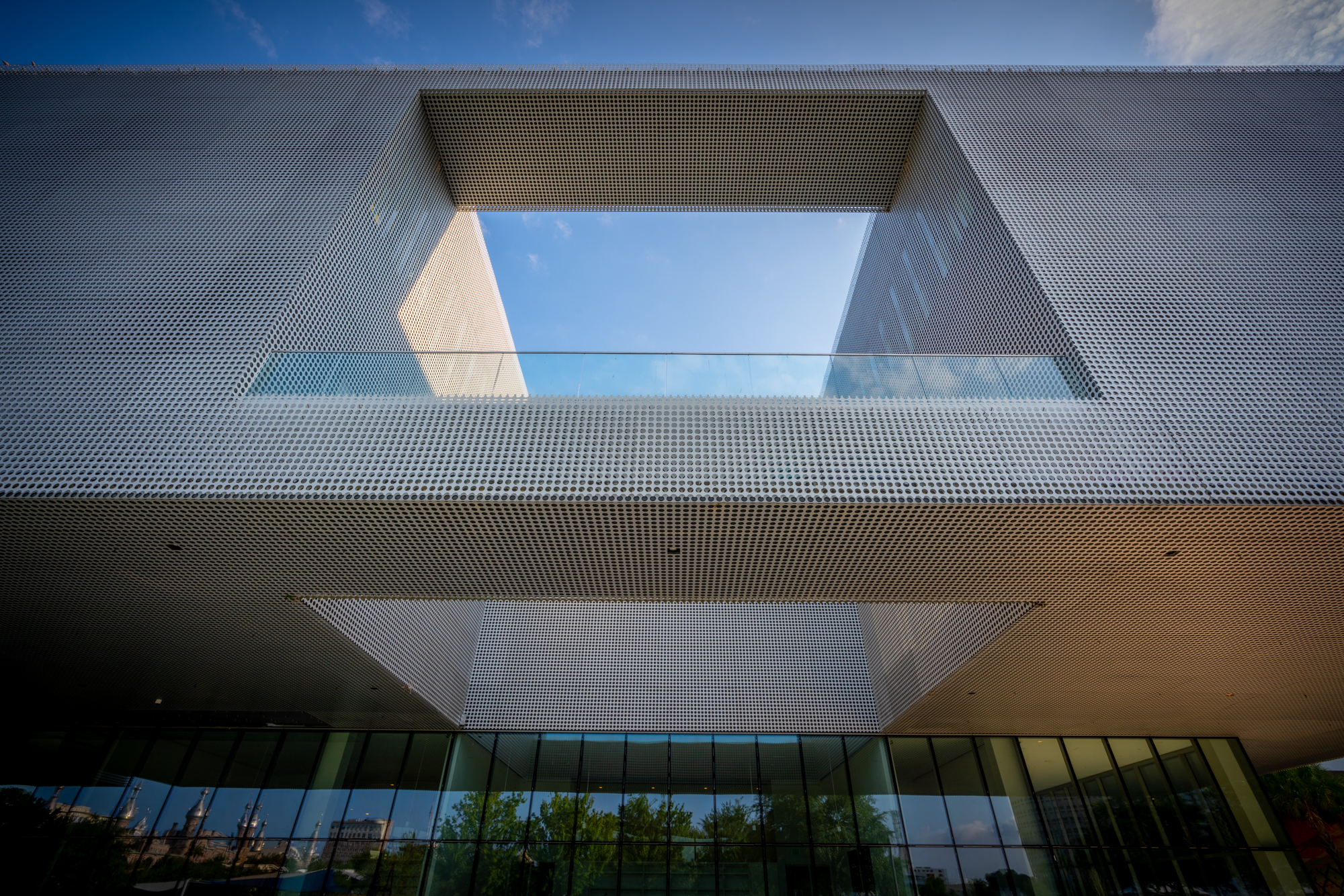
Photograph of the Tampa Museum of Art by Stanley Saitowitz / Natoma Architects, by Jean-Claude Ardila
What do you find to be the most significant challenges in compellingly photographing architecture?
I believe the most significant challenges are accessibility to the subject matter and crowds on location. It’s so difficult nowadays to just show up at a place and start taking photos without being told that photographs are not allowed. Yes, in some places you can request permission, but most will deny it for liability reasons…at least here in the US.
How big a role did post-production play in conveying the story of your photograph, and how do you approach that process?
Post-production is a very important part to accentuate the story. To be honest, I usually don’t look at most of the images when I am capturing them. I set the exposure, frame the photograph and take it. I leave the element of surprise for when I import the images to my computer, similar to the way we did it back in the day when rolls of film were sent out to be developed.
In the image “A Glimpse Of Heaven, ” I needed to call attention to the paraglider and create balance with the building. I adjusted the shadows, highlights, and contrast to create a subtle tunnel vision that guides your eyes to the brightest part of the image, just like if you were inside of a tunnel looking toward the light, hence the name of “A glimpse of Heaven.” In addition, I removed part of the saturation of the structure because the light hitting the lawn surrounding the building reflected green and yellow colors. There is also a bird’s nest near the bottom left corner of the tunnel that was distracting from the main focus and by reducing the saturation the colors blended correctly.
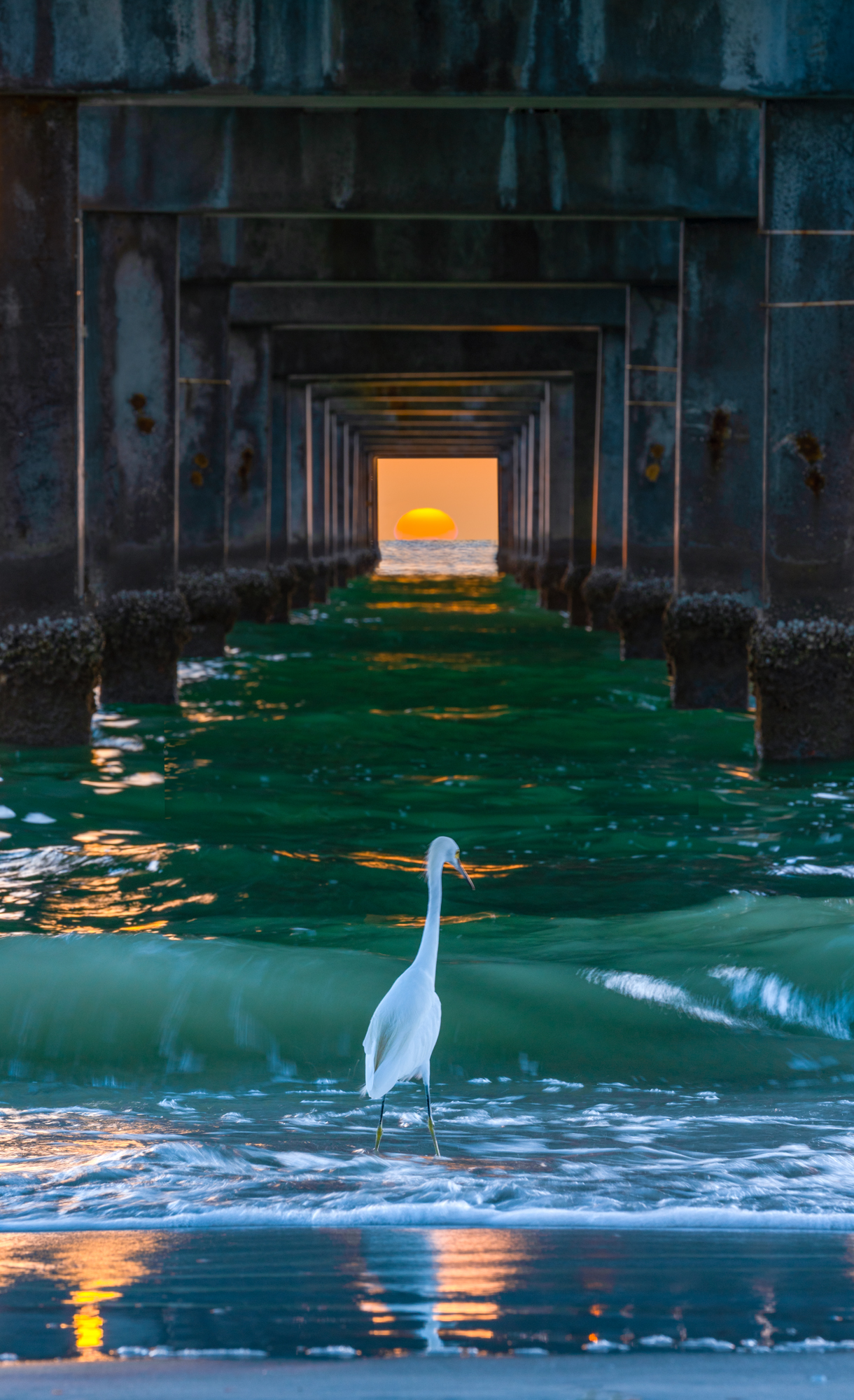
“The Quintessence of Life” by Jean-Claude Ardila
What one tip would you give to someone looking to win next year’s One Photo Challenge?
I would say to pick a unique building or subject matter in your city and really study it from all possible angles. Take into consideration the light hitting the building from different times of the day and use your imagination (yes — your imagination!) and think what would make that image interesting. It could be a person walking by, a bird posing or simply the perfect light and shadows creating an interesting mood in the image. The best photos I have ever taken have been created using that simple strategy of using my imagination. Most times when you do that, reality will put the pieces together and make the image even better for you. That happened to me when I took “The Quintessence of Life,” another of my award-winning photographs. I planned the image for 3 years, and the result was even better than I expected. You can find it on my Instagram.
And last but not least, be patient. Photography is the creative art of planning and patiently waiting for elements to align perfectly in front of you. Good luck!
Call for entries: The 14th Architizer A+Awards celebrates architecture's new era of craft. Apply for publication online and in print by submitting your projects before the Main Entry Deadline on December 12th!
